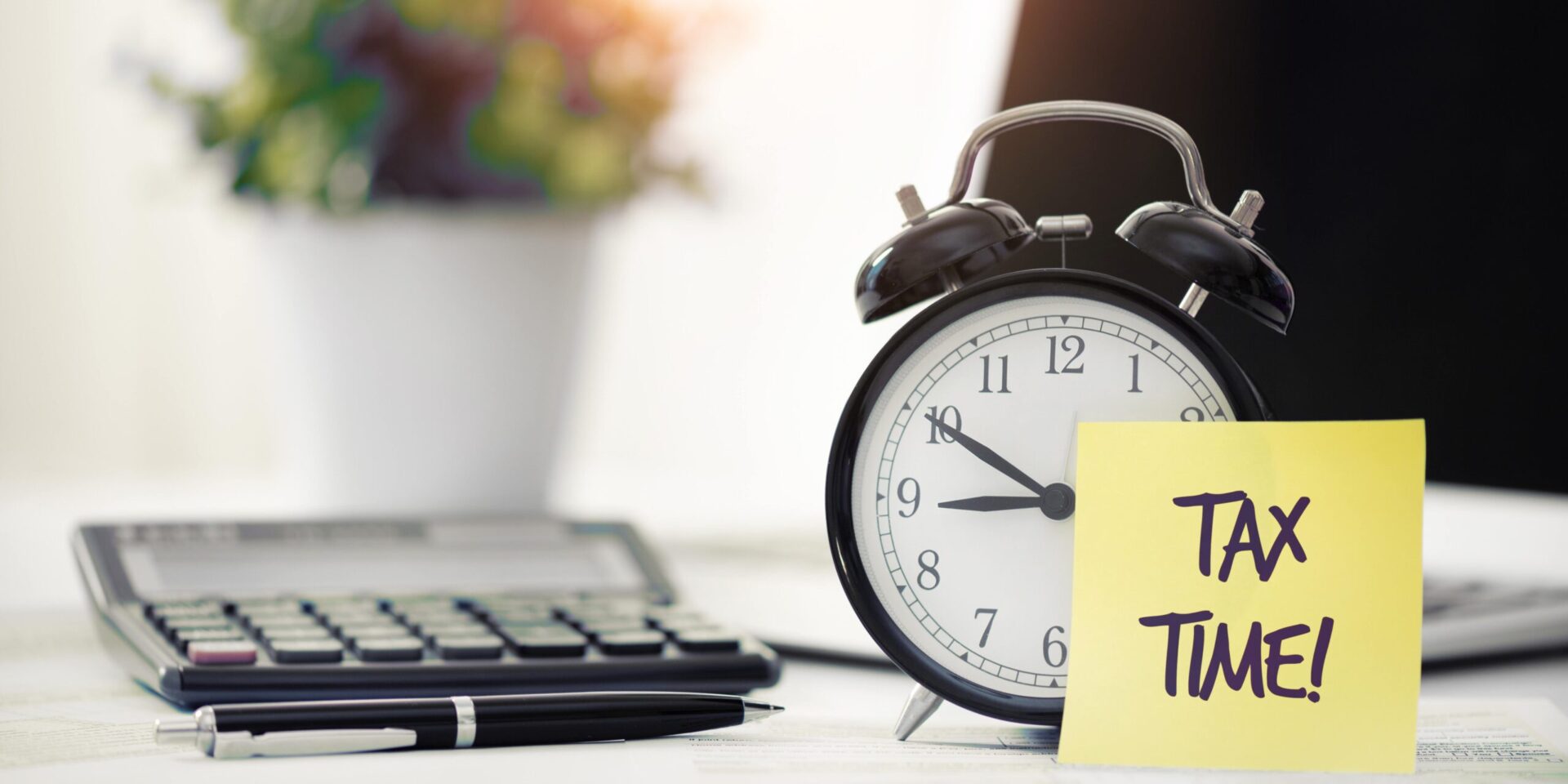
Tax time can be stressful, specifically the surprise when you find out how much you owe. Quarterly taxes could take away some of the guesswork because it is based on your quarterly income. Quarterly taxes are paid once each quarter to ensure you avoid fees, and once you do your business tax returns, you will know if you overpaid or still owe. These quarterly tax payments help small business owners and freelance workers who make over $400 in net earnings stay on top of their finances. While it can feel confusing, understanding what goes into quarterly taxes can help you and your finances.
The Estimated Tax Payments Explained
Estimated taxes are based on the filer’s reported income for the tax year, but instead of taking the taxes out of your paycheck biweekly or monthly, they are paid quarterly. This way of paying taxes is required of those in business for themselves because employer withholdings are missing from their paychecks. Making your tax payment quarterly is based on an estimate, and if you overpay or need to pay more, you will find out when you file your income tax for the year. If you overpay, you can request a reimbursement from the IRS. Each year you or your business will complete the appropriate tax form to determine your estimated taxable income and payments. For most, this is the IRS Form 1040-ES.
Who Is Required to File Quarterly Business Taxes?
Quarterly taxes are not a requirement for everyone. Estimated taxes are required for anyone in business for themselves who does not have taxes automatically deducted from their pay. Those expected to pay quarterly business taxes include sole proprietors, partners and S corporation shareholders. Working freelance is considered working for yourself. If you receive additional income such as interest, dividend, alimony or self-employment income, you may be required to pay estimated taxes. These taxes include self-employment, FICA and income tax on your business profits and other income. Quarterly taxes are an estimate based on how much you expect to earn that year, and things can happen to increase or decrease how much you owe. If you find that you expect to earn more than you estimated, you can make adjustments to your tax forms.
Who Is Not Required to File Quarterly Taxes?
Some individuals and businesses are not required to pay quarterly taxes. First, you must be a U.S. citizen; the previous tax year must have been taxable for a full calendar year. This means you must have had one full 12 months of taxable income to be exempt from quarterly taxes the following year. Sound like you? Here are the qualifications: you owe less than $1,000 when you file your taxes or if your total tax equaled $0 on your Form 1040-ES. These rules best suit self-employed contract workers who work gig jobs.
How to Calculate Quarterly Tax Payments
Calculating your quarterly tax payments means you have a few factors to consider. First, consider the taxes your business owes federally and on a state level. Your location can determine state income taxes, sales taxes and other taxes. There could also be additional taxes depending on the type of business. A tax professional can help you estimate how much you will owe, or you can even use tax software to help. You could also estimate using Form 1040-ES and your previous years’ returns. Whichever method you choose, be prepared for potential underpayments. If you overpay, you can also ask for an adjustment to get those funds returned to you. You can estimate how much you’ll owe and send a quarter of that during each quarterly payment period. For example, if you think you will owe $20,000 in loans, pay $5,000 each quarter. This method of estimating can be helpful if you know your income is consistent.
How to Pay Quarterly Taxes
Making quarterly payments seems daunting, but it is pretty simple. However, there are a few steps to make sure it happens seamlessly:
- Create an account at the Electronic Federal Tax Payment System, EFTPS. It is a free service provided by the U.S. Department of the Treasury, and you can use the system to pay any taxes you owe the IRS.
- Payments can also be made through the IRS. Using this account, you can pay using your bank account, debit or credit card or even a digital wallet.
- An IRS app can also be downloaded to make paying even more accessible from your mobile device.
You can pay the remaining tax balance that your quarterly payments should have taken care of when you file your taxes at the end of the year.
The IRS website accepts full or partial payments. You will need your PIN, business account number and the last four of your business tax identification number; this could be either your EIN or your SSN as an individual. If you can’t pay it in one lump sum, you can apply for a payment plan directly through the IRS. There are requirements to qualify and fees associated. The costs can range from $31 for a long-term payment plan with automatic withdrawals or a $130 set up for a non-direct debt payment plan.
Quarterly Payment Due Dates
You are expected to pay quarterly, meaning four times a year. Each quarter is broken down as such:
- First quarter – January 1 to March 31
- Second quarter – April 1 to May 31
- Third quarter – June 1 to August 31
- Fourth quarter – September 1 to December 31
Payments are typically due on the 15th. The payment dates are as follows: April 15, June 15, September 15 and January 15 of the following year. If these dates fall on a Saturday, Sunday or holiday, you can pay on the next business day, and it will still be considered on time. If you fail to make your tax payment in full or on the due date, you can be charged a penalty. As a best practice, when mailing a payment, ensure the payment is postmarked even if you are sending it early.
Penalties for Late Payments
It is essential to make your tax payments on time each time. If you fail to pay on time or underpay, there could be a late payment penalty. The penalty for missing your deadline is 0.5% of the amount unpaid for each month or part of the month it’s not paid. You are given a little wiggle room if you underpaid your estimated taxes. For example, most can avoid an underpayment penalty if they owe less than $1,000 in tax after subtracting withholding and credits. You can also avoid a penalty if you paid at least 90% of the tax for the current year or 100% of the tax shown on the previous year’s return, whichever is the smallest of the two. You are still responsible for the payment, but you avoid the penalty. This reinforces the importance of making your payments on time and staying on top of them. If you fall behind, it can be hard to catch up, impacting your following years’ payments and penalties. The IRS also offers various forms to avoid or lower the penalty by annualizing your income.
Important Payments Every Quarter
Taxes are a sure thing; you have to pay them. The critical thing to remember is to pay them and make the payments on time. More traditional employees do not have to work about quarterly business taxes, but if you own a small business or work as a self-employed person, you must pay your taxes on your own. You can use IRS forms to help you estimate how much you will owe for the year, and unfortunately, if you miss or pay too little, there might be fees. With proper planning, calculations and estimations, you can make accurate quarterly payments. If you fail to pay or underpay, there is a penalty, but there are some exceptions. Still seem challenging? doola can help. With doola bookkeeping services, we can help your business stay on track with your quarterly payments and help you estimate your costs. While it is still a guessing game, if you want to get as close to the right amount as you can, we can help.
FAQs
What tax forms are required quarterly for small businesses?
For small businesses like sole proprietorships and LLCs with only one member, you would complete a Form 1040-ES.
What business forms require quarterly and annual taxes?
Quarterly and annual tax payments are required for all businesses that make over $1,000.
Where do I mail my federal quarterly business tax form?
If you can not make an online payment, you can mail your quarterly tax form and payment directly to the IRS. The address is:
Internal Revenue Services
P.O. Box 1300
Charlotte, NC 28201-1300




